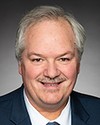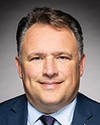Thank you for your compliments.
You're correct in saying that it's easier to treat someone with a heroin addiction compared with someone who is using readily available Dilaudid. When we first started treating opioid dependance some 40 years ago, the only available drug at that time was methadone. Methadone is a long-acting opioid agonist that was first developed for the treatment of pain at the end of the Second World War.
The first methadone clinic was established in Vancouver in the very early seventies. At that time, Dr. Cassidy noted that patients who were prescribed methadone for treatment of their pain were quite comfortable and remained on that dose for a long period of time and never required increasing doses.
On the other hand, shorter-acting opioids, such as heroin and Dilaudid.... Because they are so short-acting, the effect is that every two to three hours the patient is going into withdrawal. They respond—combat those feelings of withdrawal—by taking more opiates. When you take more opiates.... You have to understand the neurochemistry of the drugs. To simplify it for the committee, I can only emphasize that opioids, in actual fact, end up destroying nerve endings. When nerve endings are damaged, they do not respond to medication. That's why doses of opioids have to, over time, be increased. It involves those chemicals called cytokines, which some people will have heard of.
When it comes back to treating heroin addicts some 30 or 40 years ago when there weren't any other substances on the street—it was mainly heroin and opium—then the prescription of methadone was very successful. The number of physicians treating this gradually grew, and we were able to keep up with the demand.
It's really since the introduction of these safe supply clinics that [Technical difficulty—Editor] the overabundance of short-acting opioids, which are naturally destroying the neurochemical integrity of the users, that we've seen the demands that those same patients need ever-increasing doses. Safe supply clinics are, in actual fact, doing more harm than good.
I'm not opposed to alternatives to methadone and buprenorphine, which is Suboxone, which I said in my opening statement. The alternatives should be long-acting, akin to methadone and Suboxone, and they need to be monitored so that we don't get this abundance of short-acting drugs, which are diverted. I've witnessed that myself first-hand. I've seen it on the streets outside my own clinic. You don't get the abundance of divertible opioids that end up, unfortunately, in the hands of young people, such as Mr. Sword's daughter.
I hope that's answered your question.




